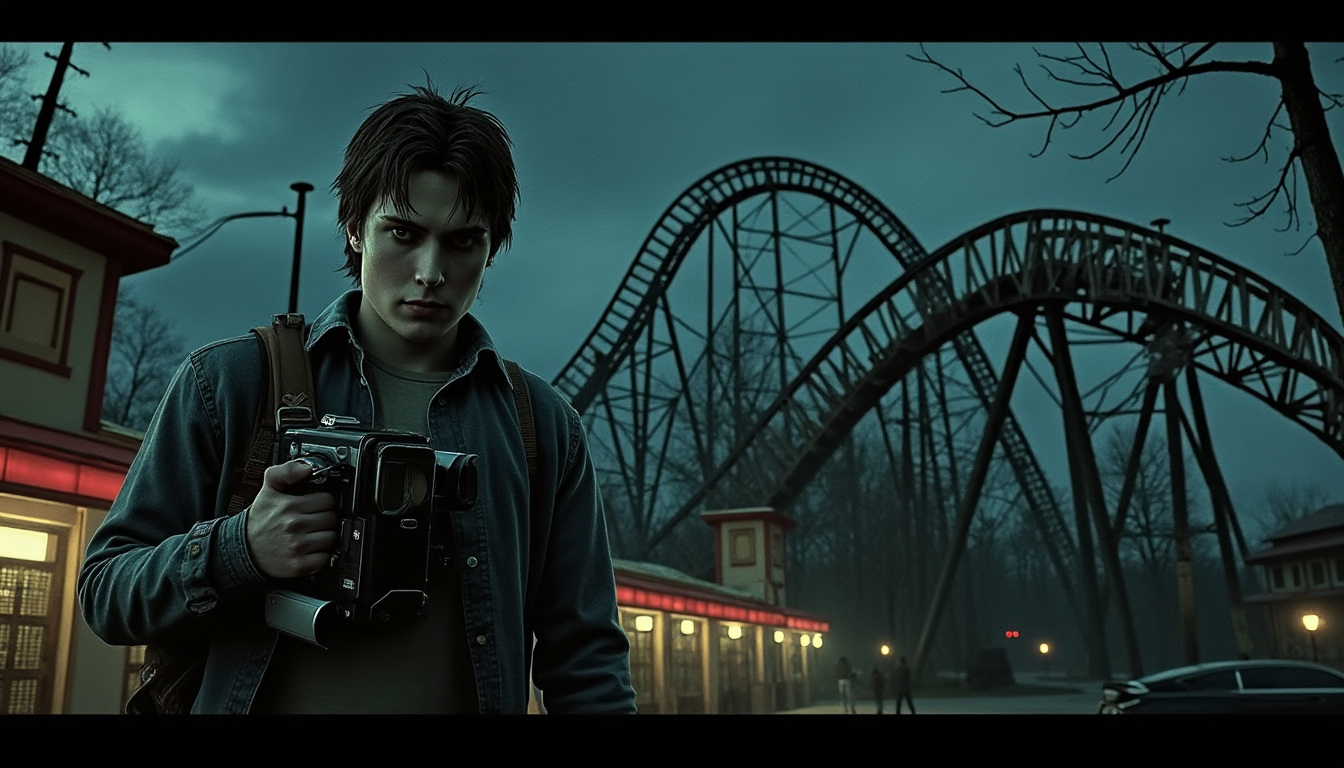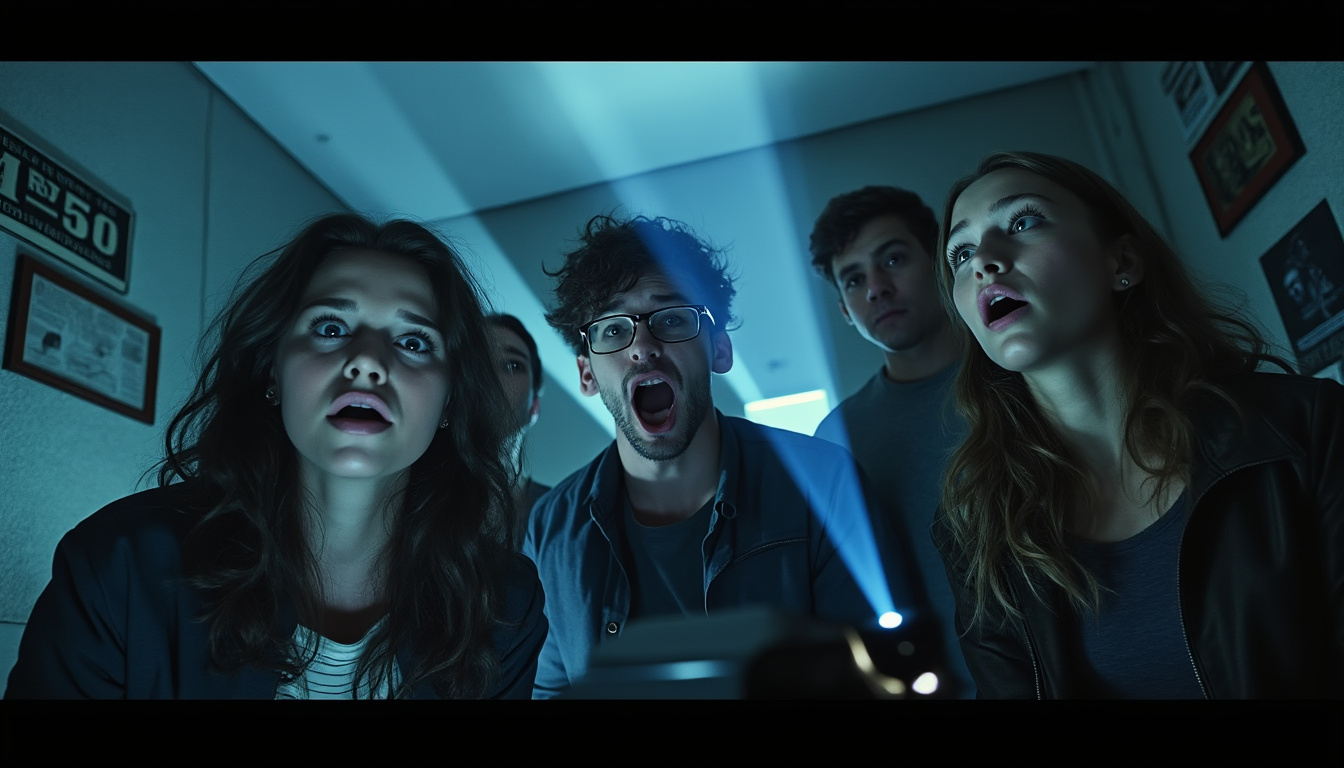The anticipation surrounding the next installment of the cult classic horror franchise, Final Destination, builds by the day. As the release date for Final Destination: Bloodlines approaches, fans of horror movies and thrillers are eager to uncover what this new entry will bring to the table. Unlike its predecessors, which followed a somewhat predictable pattern in terms of storytelling and cinematic sequences, Bloodlines promises to introduce unique elements that will surprise and enthrall audiences. The film not only revisits the franchise’s beloved themes of fate and survival but also refreshingly deviates from how these themes have traditionally been presented.
Reimagining the Opening Sequence in Final Destination: Bloodlines
For years, die-hard fans have enjoyed the classic *Final Destination* formula: a tense, premonitory sequence that sets the stage for the chaos and carnage that ensues. Co-directors Adam B. Stein and Zach Lipovsky have revealed that the opening sequence of Bloodlines will not follow the well-trodden path of its predecessors. Instead, this segment will provide viewers with a historic snapshot that diverges from the normal structure—starting the film in 1969.

During an interview with SFX Magazine, Lipovsky elaborated on how the opening scene features a series of deaths from a past timeline, a stark contrast to the usual contemporary scenarios. He expressed hope that this unexpected choice would engage viewers, making them lean forward in their seats and try to unravel the unfolding mystery. The transition from the 1969 premonition to modern-day narratives is designed to keep the audience guessing, a quality that many fans of thriller genres deeply appreciate.
The Impact of Historical Context on Cinematic Experience
Setting the film’s opening in 1969 serves multiple purposes. First, it adds a rich historical background that can deepen the narrative. By exploring how the cycle of death began, it invites viewers to engage with the characters’ motivations and emotional arcs on a more profound level. The directors aim to unveil the origins of Death’s cycle in a way that resonates with contemporary audiences who enjoy nuanced storytelling.
- Historical depth enhances character motivation.
- A new time period allows for creative storytelling.
- Engaging with the past offers fresh perspectives on familiar themes.
Additionally, undertaking this historic exploration offers opportunities to incorporate diverse visual effects that can showcase the difference in filmmaking techniques between 1969 and the present day. For instance, the film could juxtapose retro aesthetics with cutting-edge visual effects that highlight how far the horror genre has evolved. These choices contribute to a more dynamic cinematic experience that sets Bloodlines apart from its predecessors.
| Element | *Final Destination* Classic Formula | Bloodlines New Approach |
|---|---|---|
| Premonition Scene | Modern-day character’s foresight | Historical backdrop (1969) |
| Death’s Representation | Current societal issues | Past events impacting present |
| Character Focus | Single protagonist’s journey | Multi-generational narrative |
This change not only paves the way for a suspenseful narrative but also rekindles a sense of mystery—something that thrills fans who appreciate the twisty storytelling typically found within the {Final Destination} movies. Moving from past to present poses intriguing questions: how do the actions taken in the past reverberate through generations? Such themes resonate with families and communities, allowing the narrative to touch on more than mere survival.
Anticipation of Audience Reactions
The directors’ decision to switch gears has undoubtedly sparked excitement within the fan community. Well-known for their refreshing takes on established franchises, Stein and Lipovsky specifically aim to challenge audience expectations. With a reputation built on unexpected plot twists, the duo wants to take these elements even further in *Bloodlines*.

Lipovsky articulated this goal clearly: “As moviegoers, we love it when you have to lean forward in your seat because a movie is being unpredictable.” By doing away with the usual tropes that audiences have come to anticipate, the directors hope to induce a renewed sense of tension—throughout the film, viewers may guess who will survive and who will meet their end, only to be continually misled.
Dynamics of Screenplay and Scriptwriting Choices
In crafting the screenplay for *Final Destination: Bloodlines*, the writers have explored various techniques to maintain unpredictability. Given the franchise’s long-standing focus on fate, the narrative will delve into how the characters grapple with their destinies. Challenges may arise as they encounter shifts that defy expectations, leading to moments of intense emotional engagement.
- Incorporating shock-value deaths that establish tension.
- Layering character backstories that enrich motivation.
- Employing red herrings to distract viewers from the true outcomes.
As these ideas materialize in the script, audiences are more likely to find themselves questioning their assumptions. The desire for audiences to be strategically unsettled remains at the forefront of the creative team’s focus. By flipping traditional expectations on their head and incorporating more intricate storytelling methods, the film aims to maintain tension and excitement throughout its runtime.
| Element | Traditional Elements | *Bloodlines* Innovations |
|---|---|---|
| Character Development | Surface-level portrayals | Multi-layered arcs with historical influence |
| Death’s Mechanics | Fate determined by single premonition | In-depth exploration of legacy and family ties |
| Pacing | Predictable structure | Subverting expectations with varied pacing |
Diving into the Fear Factor: Visual Effects and Cinematic Experience
In horror films, the use of visual effects plays a pivotal role in creating fear, tension, and engagement. For *Final Destination: Bloodlines*, the directorial team has emphasized the importance of crafting memorable and unsettling visuals that push the boundaries of the thriller genre. The advancements in CGI and practical effects have given filmmakers a multitude of tools to evoke visceral reactions within audiences.
Employing state-of-the-art techniques, the directors wish to present the vivid outcomes of the premonition scene from 1969 and its ramifications on modern-day scenarios. The combination of meticulous scriptwriting and powerful visual storytelling results in a *cinematic experience* that captures multiple aspects of fear—from psychological to visceral.
Strategies for Effectively Deploying Visual Horror
The creative team has identified various strategies to ensure that *Bloodlines* effectively engages and terrifies its audience:
- Realistic depictions of fatal accidents that invoke genuine fear.
- Utilizing atmospheric lighting to create suspenseful environments.
- Employing camera angles that enhance feelings of dread and impending doom.
These techniques contribute to not only a terrifying viewing experience but also a thoughtful reflection on mortality and the consequences of decisions. As characters face unending cycles of tragedy, the emotional toll on viewers is meant to resonate as fiercely as the shocking visuals on screen.
| Visual Element | Effect in Horror | Application in *Bloodlines* |
|---|---|---|
| Lighting | Creates tension | Dark and moody settings during tense moments |
| Cinematography | Enhances viewer immersion | Dynamic shots that emphasize movement and chaos |
| Sound Design | Heightened anxiety | Implementing unexpected sound cues to shock |
Family Dynamics and Psychological Horror Elements
A significant theme in *Final Destination: Bloodlines* revolves around family dynamics and how decisions echo through generations. By examining these connections, the film seeks to delve into a psychological layer of horror that is often overlooked in standard thrillers. Inciting incidents where personal choices lead to gruesome outcomes not only intensify the fear factor but invite viewers to reflect on the impact of their actions.

Moreover, the tagline “Death runs in the family” encapsulates this idea, highlighting the hereditary aspects of fate faced by the characters. Each death experienced echoes a family history, drawing attention to the narrative’s emotional stakes and enriching the overarching plot. This calls upon audiences to engage with the content on a deeper level, as themes of loss, regret, and redemption come into play.
Potential Audience Engagement Strategies
To connect with viewers on this familial level, several strategies can be employed:
- Creating relatable characters facing familial pressure.
- Illustrating the internal conflicts that arise due to intertwined fates.
- Addressing the psychological impacts of successive deaths on family members.
As audiences are drawn into this multifaceted narrative, the emotional depth amplifies the tension throughout *Bloodlines*, making it a gripping addition to the franchise. By shifting focus toward family, the film does not shy away from the harsh realities that shape human experiences, intertwining horror with deep-seated emotional resonance.
| Theme | Representation in *Bloodlines* | Emotional Impact |
|---|---|---|
| Family Ties | Exploration of heredity-related trauma | Heightened empathy through relatable characters |
| Choices and Consequences | Repercussions of personal decisions | Dramatic stakes increase viewer investment |
| Mortality | Depicting the inevitability of death | Provoking introspection and emotional engagement |


